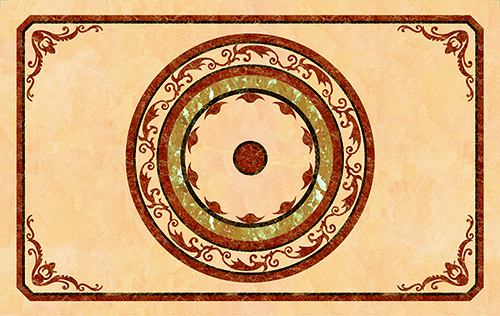Dec . 01, 2024 05:22 Back to list
Exploring Various Surfaces for Outdoor Basketball Courts and Their Benefits
Outdoor Basketball Court Surface Options A Comprehensive Guide
When it comes to designing and building an outdoor basketball court, one of the most critical considerations is the surface material. The surface not only affects the gameplay experience but also influences player safety, maintenance, and the court's longevity. In this article, we will explore various outdoor basketball court surface options, weighing their benefits and drawbacks to help you make an informed decision.
1. Asphalt
Asphalt is one of the most common materials used for outdoor basketball courts. Its popularity stems from its affordability, durability, and ease of installation. Asphalt surfaces provide a smooth playing field that allows for good ball bounce and roll, essential for competitive gameplay.
Advantages - Cost-Effective Asphalt is relatively inexpensive compared to other surface options. - Durability With proper maintenance, asphalt can last for many years. - Quick Installation Asphalt can be poured and set quickly, allowing for faster project completion.
Disadvantages - Heat Absorption Asphalt can become extremely hot under direct sunlight, making it uncomfortable to play on during the summer months. - Surface Cracking Over time, asphalt may develop cracks due to temperature fluctuations, necessitating regular maintenance and potential resurfacing.
2. Concrete
Concrete is another popular choice for outdoor basketball courts. Known for its strength and durability, concrete surfaces can withstand heavy foot traffic and adverse weather conditions.
Advantages - Longevity Concrete surfaces tend to last longer than asphalt with less regular maintenance. - Good Traction A well-finished concrete court provides excellent traction, contributing to better performance during play. - Versatility Concrete can be customized in terms of color and texture, enhancing aesthetic appeal.
Disadvantages - Higher Initial Cost The upfront cost of installing a concrete court is generally higher than that of asphalt. - Hardness The rigidity of concrete can lead to a higher risk of injuries. Players may experience more stress on their joints compared to softer surfaces.
outdoor basketball court surface options

Synthetic surfaces, such as modular tile systems and poured polyurethane, are gaining popularity among basketball enthusiasts due to their unique features.
- Modular Tiles These are interlocking tiles made from high-quality plastic. They provide great shock absorption and can be easily replaced if damaged.
Advantages - Shock Absorption Modular tiles help reduce the impact on joints, making it safer for players. - Easy Maintenance If a section gets damaged, only that part needs to be repaired or replaced. Disadvantages - Initial Cost The initial investment can be higher than asphalt and concrete. - Surface Variability Over time, tiles may shift or lift, causing uneven playing surfaces.
- Poured Polyurethane This is a solid, seamless surface that offers excellent performance characteristics.
Advantages - Seamless The lack of seams prevents water from pooling and reduces maintenance issues. - High Traction Provides great grip, enhancing the gameplay experience. Disadvantages - Temperature Sensitivity Polyurethane surfaces can soften in extreme heat, leading to potential deformation. - Cost Typically more expensive than other surface options.
4. Grass and Dirt Courts
While not typical surfaces for serious play, some communities have opted for natural surfaces like dirt and grass courts. These options require significant maintenance to remain playable and are generally used for casual games or training.
Advantages - Natural Feel Many players enjoy the unique playing experience that natural surfaces offer. - Environmentally Friendly They are made from natural materials, which appeal to eco-conscious individuals.
Disadvantages - Inconsistent Playability Weather conditions can severely impact the quality and usability of the court. - Maintenance Intensive Regular mowing and care are necessary to keep the surface playable.
Conclusion
Choosing the right outdoor basketball court surface involves carefully weighing the pros and cons of each material based on your specific needs, budget, and intended use. From the cost-effectiveness of asphalt to the durability of concrete, and the innovative characteristics of synthetic options, each surface presents its unique benefits. Ultimately, the goal is to create a safe and enjoyable environment that enhances the game of basketball for players of all skill levels. Consider your priorities—whether it’s player safety, maintenance, or budget constraints—and select the surface that aligns best with your vision for the court.
-
Professional Tennis Court Lining Services Pickleball Court Marking Experts
NewsJun.24,2025
-
Pickleball Court for Sale - Premium Flooring Solutions for Sports Venues
NewsJun.10,2025
-
Maple Grove Outdoor Pickleball Courts - Premium Conversion & Durable Materials
NewsJun.10,2025
-
Best Pickleball Outdoor Courts Solutions Convert Tennis Courts, Outdoor Covered Courts, Maple Grove Options
NewsJun.10,2025
-
Convert Tennis Court to Pickleball Fast & Affordable
NewsJun.09,2025
-
Indoor Outdoor Pickleballs Durable & All-Weather for Any Court Play
NewsJun.09,2025

